Kindred Spirits | Holiday Decor with the Clineff Sisters
Holiday decorating is all in the family for two Massachusetts sisters who live in houses deeply rooted in place and history.
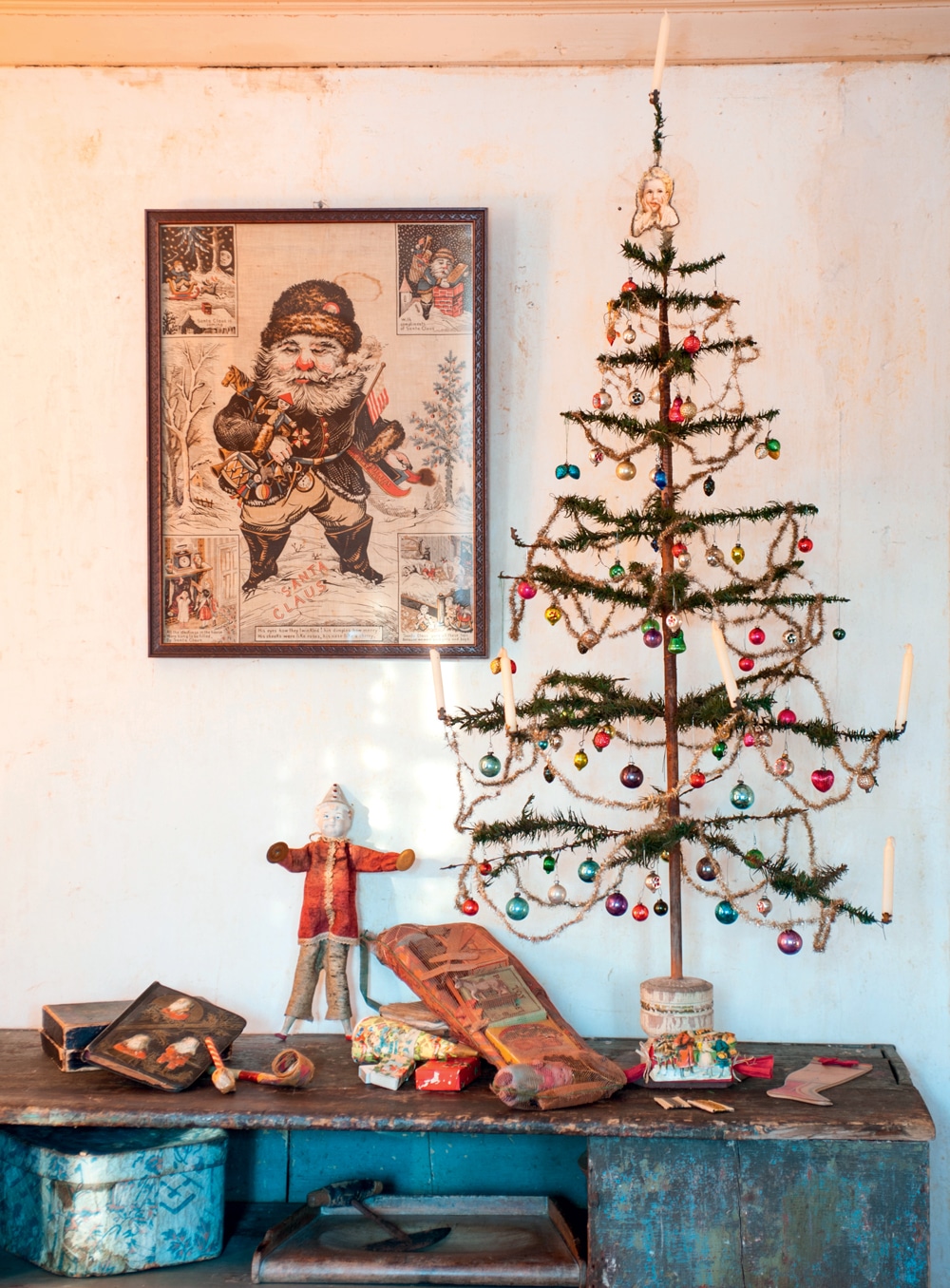
Scenes from the sisters’ homes, where the spirit of Christmas past shines in their array of antique ornaments and homespun touches.
In the small town of Topsfield, Massachusetts, about 23 miles north of Boston, locals gather for weddings and other special events in a restored 300-year-old barn. Visitors tour the 1683 Parson Capen House on a knoll overlooking the 1650 town common, which has been listed on the National Register of Historic Places since 1976. Descendants of Topsfield’s earliest settlers still call this place home. When you drive past the stone walls, meadows, and farms by the Ipswich River, it’s clear how tightly the past holds on here. It’s a town that sisters Kindra and Jody Clineff, who grew up in an Illinois home suffused with New England antiques, seemed fated to belong to.
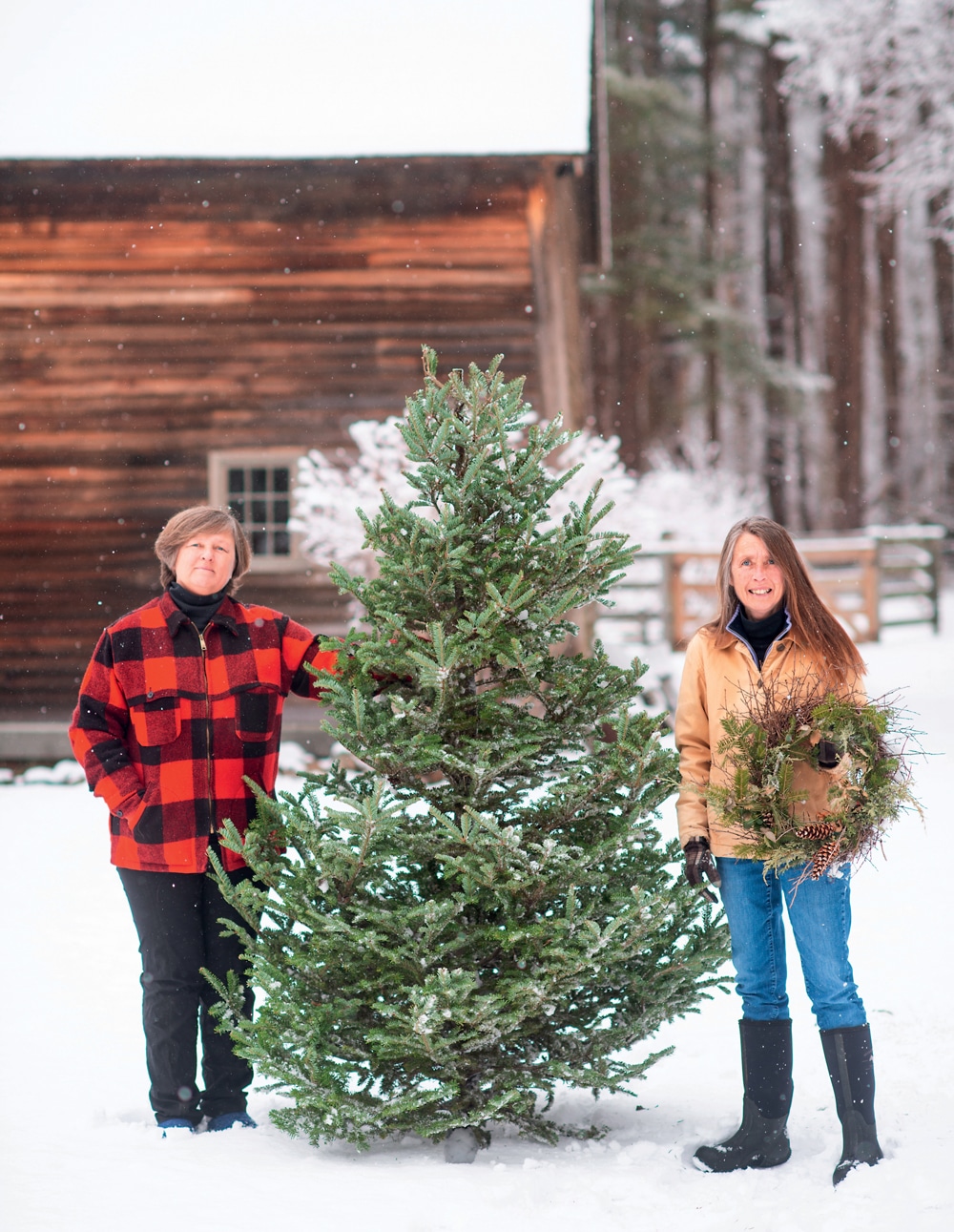
Photo Credit : Kindra Clineff
Kindra and her husband, Tim, live in the Stanley Lake House on River Road. Its first walls went up around 1683, and over the years the house was added on to, each generation leaving its imprint. It is one of the most arresting First Period houses in New England, a two-and-a-half-story wood frame with its original barn, so notable for its architecture that it boasts its own Wikipedia page. On Salem Road, less than two miles away, Kindra’s sister, Jody, lives with her husband, Steven, in the Matthew Peabody House, a saltbox that likely dates between 1672 and 1682.
“When an old friend of ours came over for the first time to see our houses, he just looked at us and said, ‘So which one of you is going to move into a cave next?’” Kindra says. “We don’t really know who has the older house. Possibly some sibling rivalry is involved.”
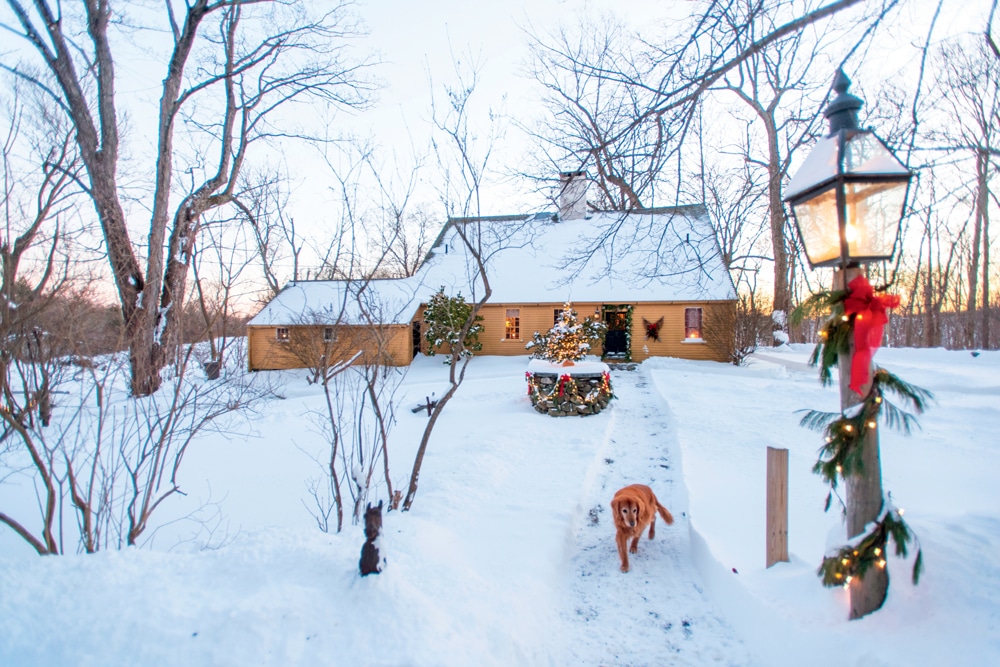
Photo Credit : Kindra Clineff
A photographer whose images have appeared often in Yankee’s pages, Kindra understands that there were forces at work that led her and her sister to this town, these houses. “My formative years were in Illinois,” she says, “but our parents always came east to buy antiques and bring them home. My dad made our farmhouse look like colonial New England. We moved to New Hampshire when I was 12, and Jody 6. My parents bought and restored three old houses.” She adds, “We are not a new-house family.”

Photo Credit : Kindra Clineff

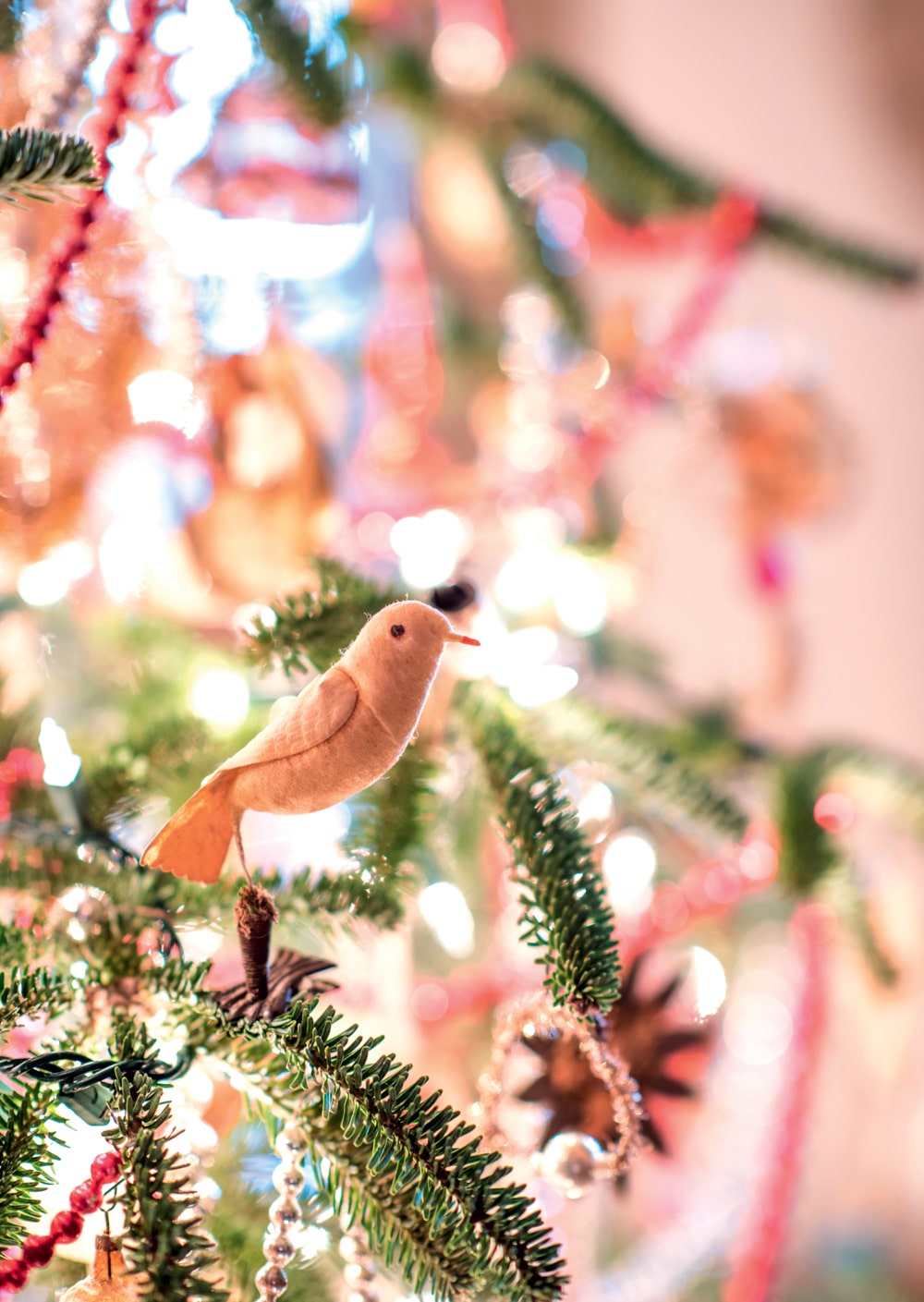
Kindra tells about the day in 2003 that changed their lives. She and Tim lived then in the Boston suburb of Winchester and were not looking to move. That day, they simply wanted to drive home via back roads after kayaking on the North Shore. First, they drove past an ancient house on Salem Road in Topsfield. “We said, ‘Oh my God, look at that house,’” Kindra recalls. “It was so wonderful-looking, but you could see it needed a lot of work. Then as we were coming down the hill on River Road, we were like, ‘Oh my God, look at that house.’ There was a ‘For Sale’ sign on it, and the woman who owned it was reluctant to show it to us because she was so tired of people just coming and gawking and not being serious buyers. We sold our house and moved in.”

Photo Credit : Kindra Clineff
Kindra joined the town historical commission and learned more about the house she had first seen on Salem Road. It was owned then by MIT but had sat empty for years. When it was finally going up for bid, Kindra convinced Jody and Steven to make an offer. Theirs was the only one, and in 2009 they moved into the Matthew Peabody House, a home filled with stories. Matthew Peabody was the great-grandfather of Sophia Peabody, who married Nathaniel Hawthorne. But in death he became a local legend: He, his wife, and his granddaughter all died on the same day, October 20, 1777.
Jody knows all this because researching the past is her passion. (For instance, from studying records of the time, she knows that while dysentery is listed as the cause of the Peabodys’ death, it’s more probable that they succumbed to smallpox, which was ravaging the town.) Besides working as Kindra’s studio manager and as assistant director of writing programs at the Harvard Extension School, Jody is also completing her master’s in museum studies. She and Kindra can walk friends through their homes as confident in the telling of who once lived there and what their accomplishments had been, and what troubles befell them, as if they were docents. When I ask what is unique about living in a house that has endured through centuries and that will forever bear, like a tattoo, the name of someone who lived long ago, they speak as if with a single voice.

Photo Credit : Kindra Clineff
“It has real personality,” Kindra says. “It has worn boards that make you wonder, Why is that worn there? Or, What used to be there? You look at the treads on the stairs. You know about the people who walked on them. It’s very captivating to me. People actually chiseled out the beams. There are marks on the joists. You really have a feeling for the people that built it out. To own an antique home is like taking an oath to respect and maintain the property for generations to come.”
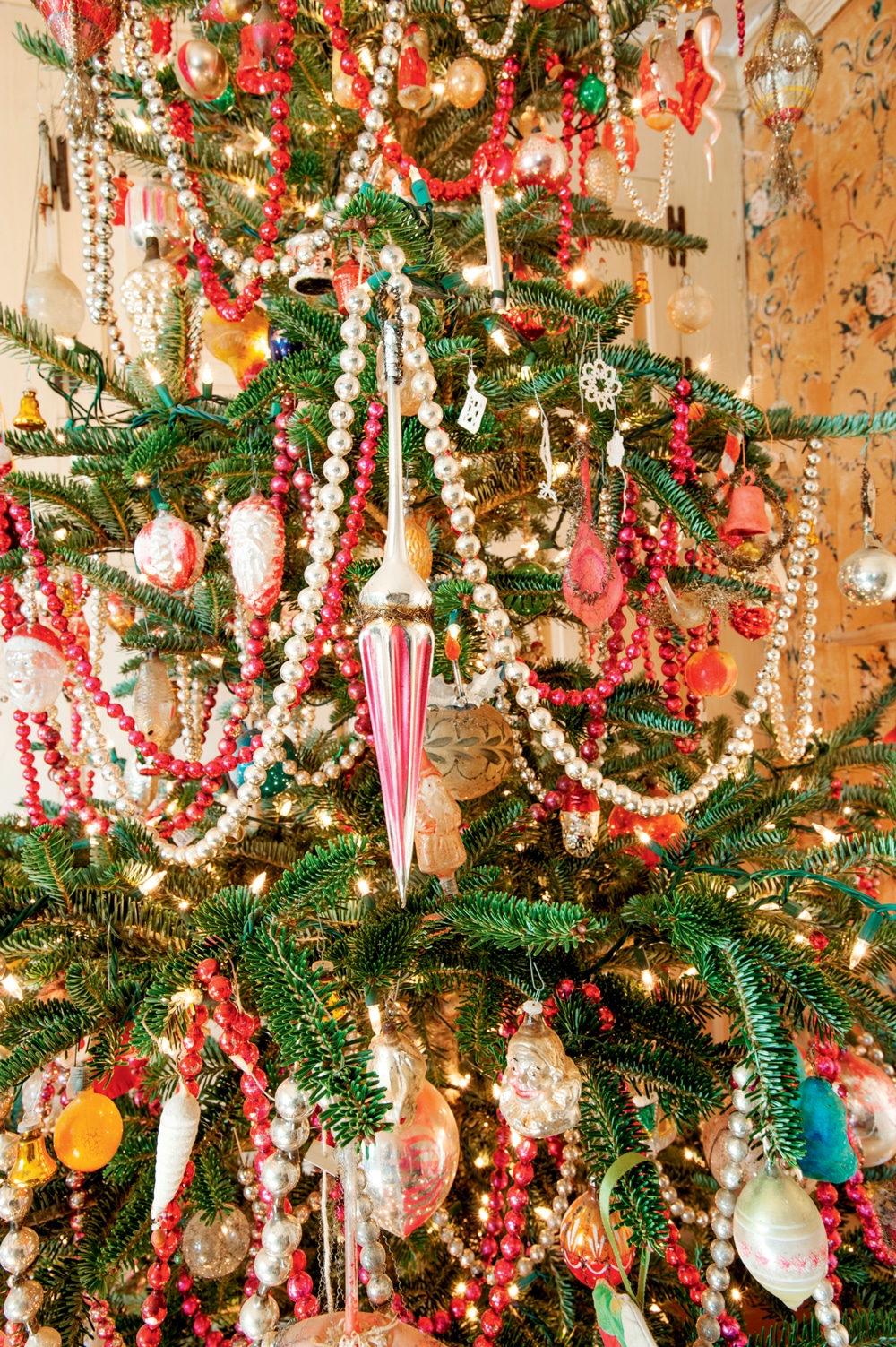
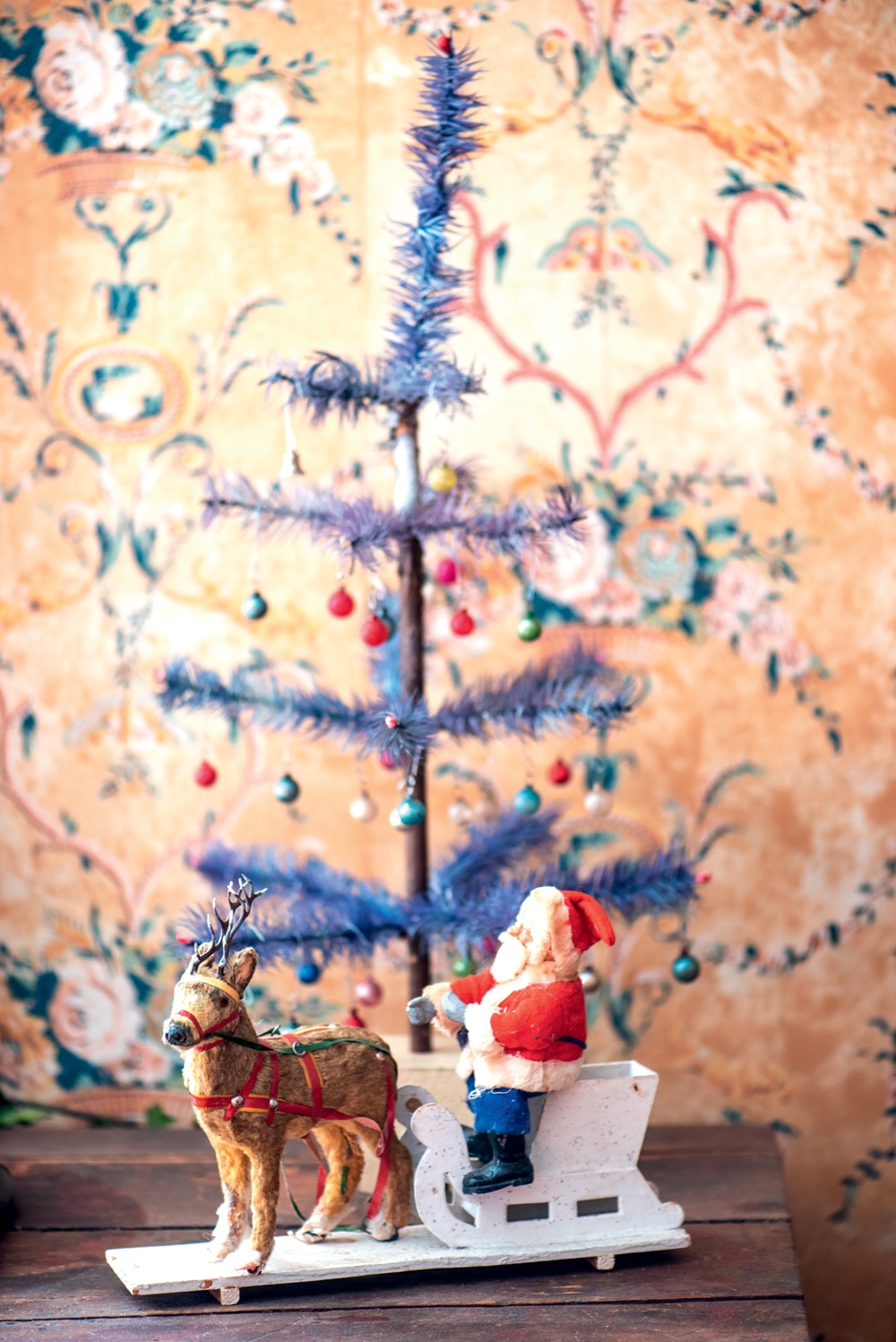
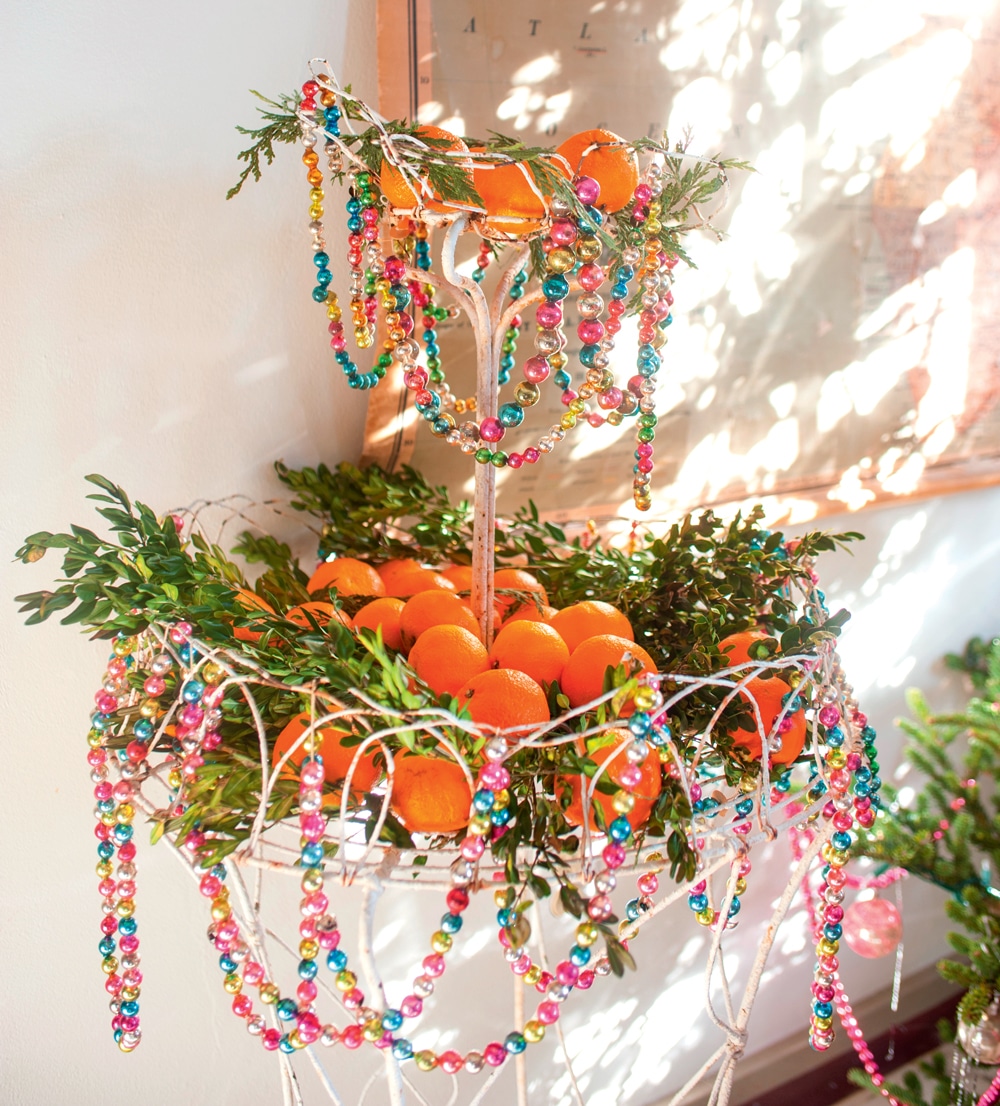
Photo Credit : Kindra Clineff
“I love antiques for their history,” Jody adds. “When I pick up an item I will research and figure out anything I can about it. And it’s the idea that these things have a past and I’m not the only one to have enjoyed it—that really gives me pleasure.”
The sisters’ passion for history and tradition and the sense that they belong to the continuum of a home’s life, they are part of its family tree, comes to life in extraordinary ways during Christmas. They start decorating in early November and do not rest until the week before Christmas. While they each confess to wanting the best live tree, Kindra admits that “Jody’s collection of antique ornaments, her feather trees, her everything-vintage Christmas rivals any museum.”
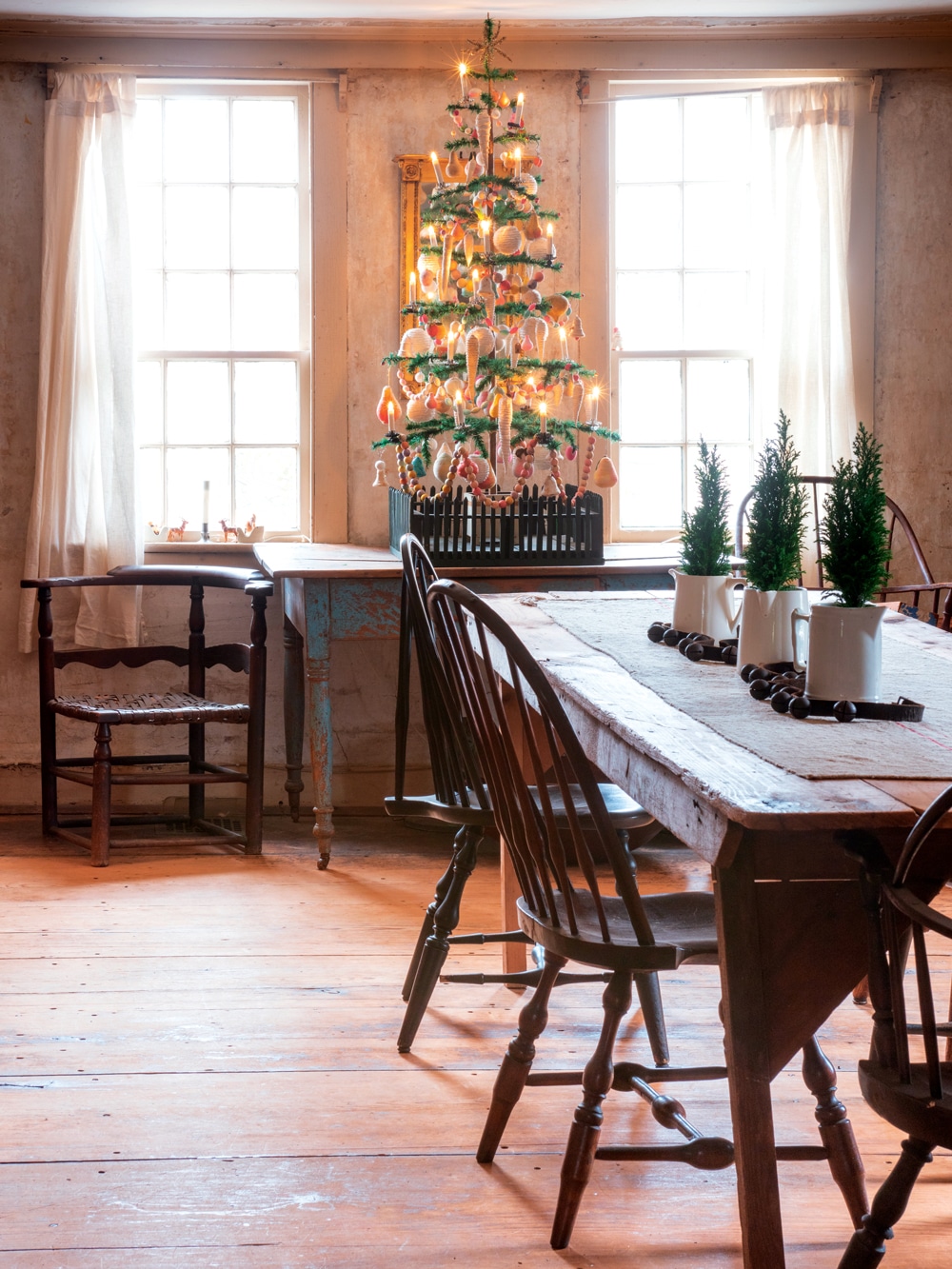
Photo Credit : Kindra Clineff
In both houses, trees are decorated as if ornaments from another century had rained down. Doors are festooned with both fresh and dried fruits and berries. Kindra creates a Maine feeling from moss and plants from her summer place Down East. Jody unpacks her carefully labeled boxes of feather trees and spun-cotton ornaments crafted more than a century ago in Germany.
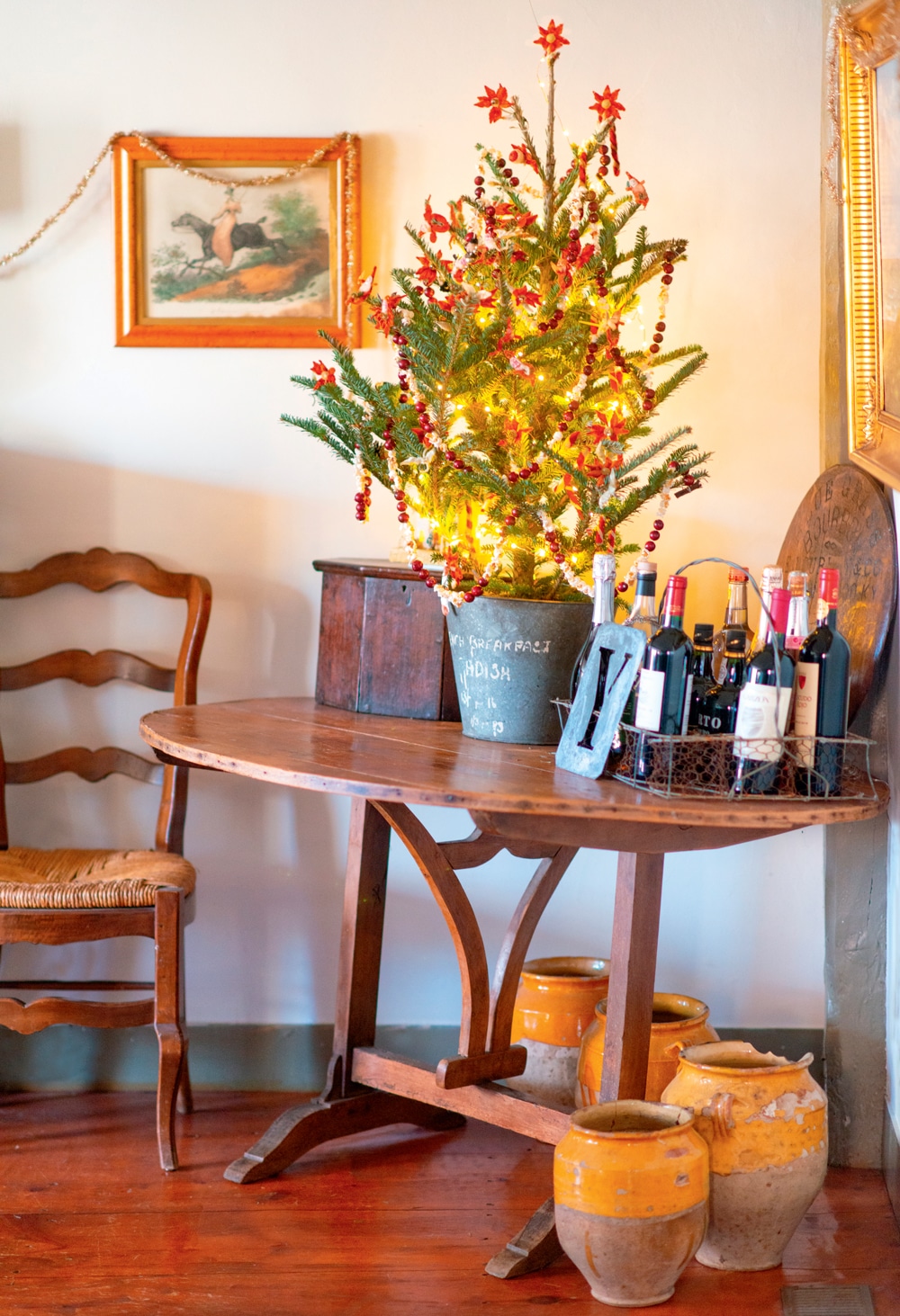
Photo Credit : Kindra Clineff
“I have a spun-cotton Hessian soldier holding a sword at his side. I have a stork with an umbrella. I have a black crow wearing a red tuxedo with gold buttons down the back and a little bow tie,” Jody says, admitting these are but the tip of her personal decorating iceberg.
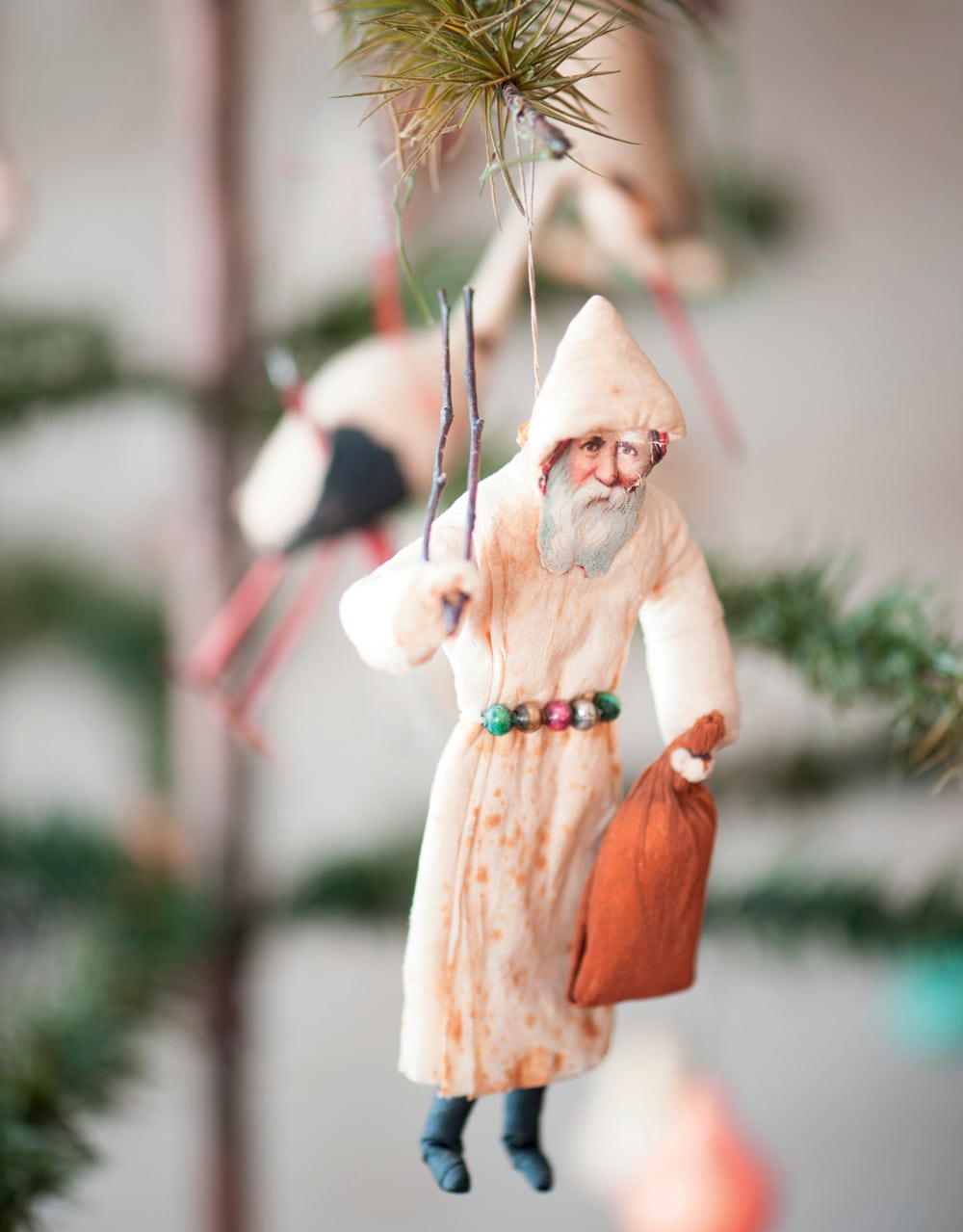
Photo Credit : Kindra Clineff
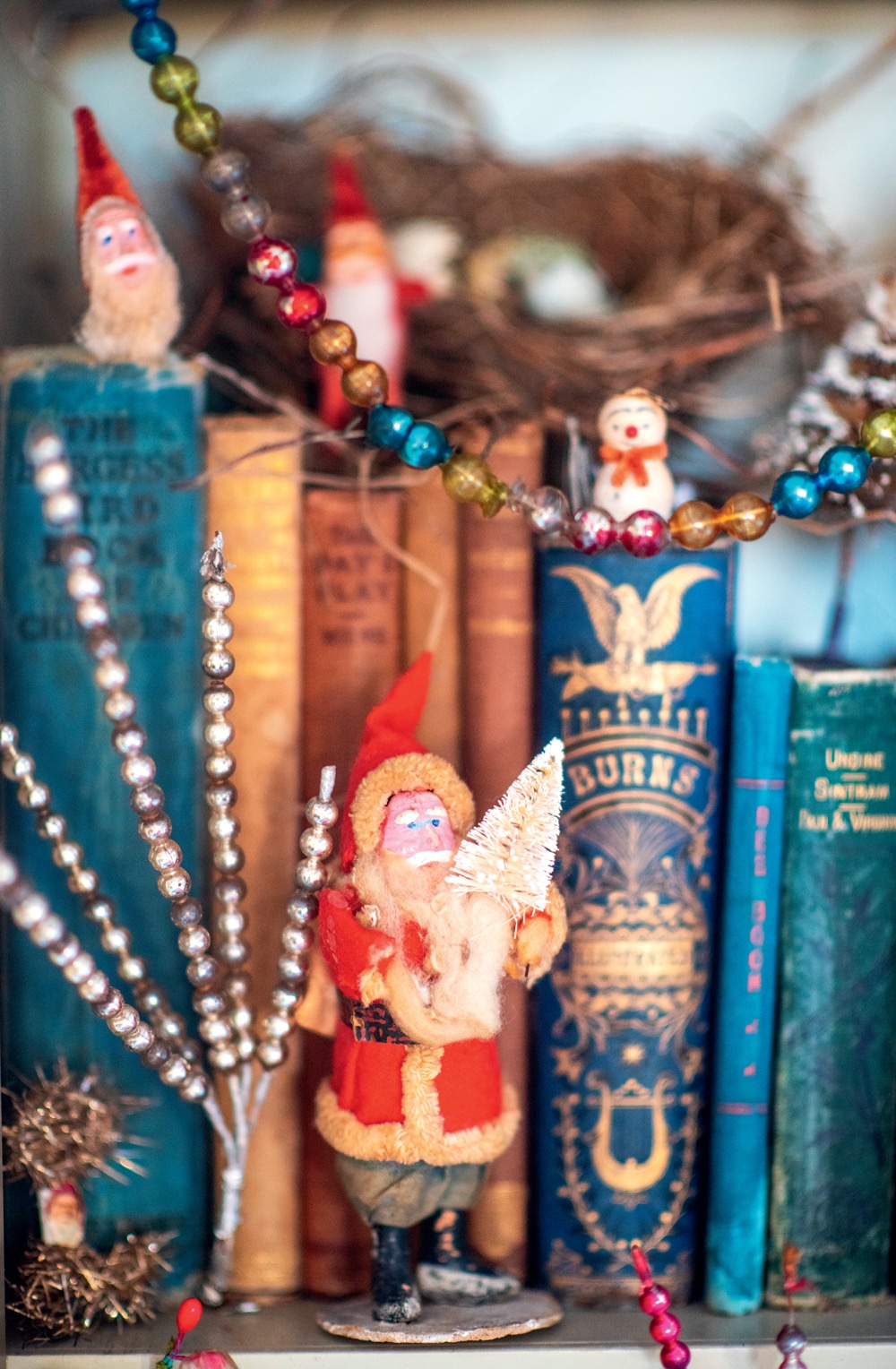
Photo Credit : Kindra Clineff
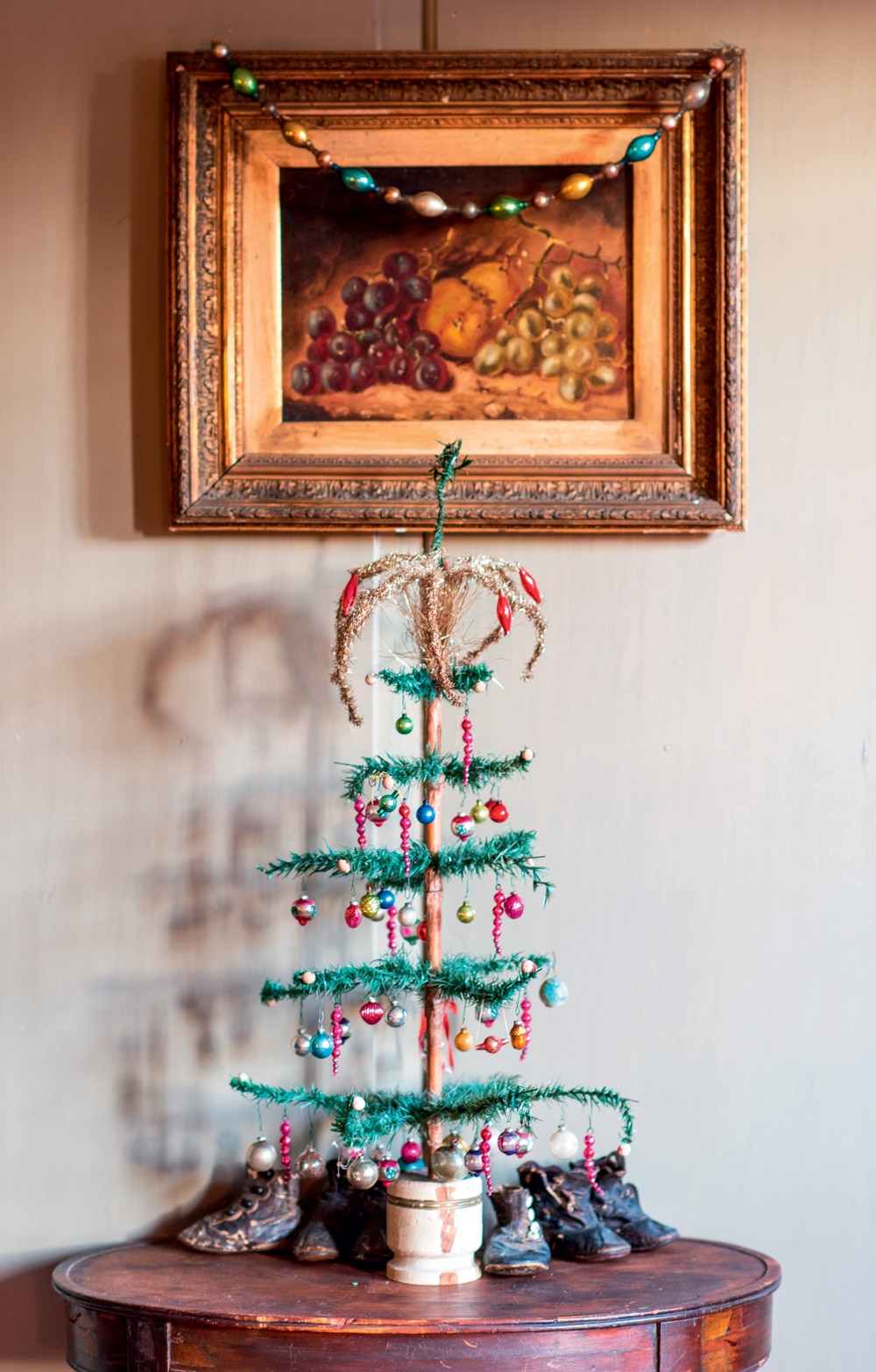
Photo Credit : Kindra Clineff
Before Christmas each sister hosts a gathering with as many as 80 guests. One week friends will visit Kindra’s home and enjoy her festive food; the next week they come to Jody’s. “We both do so much work to get ready,” Kindra says. We want others to enjoy all this. Last year was so hard. We decorated with heavy hearts. Now we will ring in a new year. The houses will again come alive.”
Mel Allen
Mel Allen is the fifth editor of Yankee Magazine since its beginning in 1935. His first byline in Yankee appeared in 1977 and he joined the staff in 1979 as a senior editor. Eventually he became executive editor and in the summer of 2006 became editor. During his career he has edited and written for every section of the magazine, including home, food, and travel, while his pursuit of long form story telling has always been vital to his mission as well. He has raced a sled dog team, crawled into the dens of black bears, fished with the legendary Ted Williams, profiled astronaut Alan Shephard, and stood beneath a battleship before it was launched. He also once helped author Stephen King round up his pigs for market, but that story is for another day. Mel taught fourth grade in Maine for three years and believes that his education as a writer began when he had to hold the attention of 29 children through months of Maine winters. He learned you had to grab their attention and hold it. After 12 years teaching magazine writing at the University of Massachusetts-Amherst, he now teaches in the MFA creative nonfiction program at Bay Path University in Longmeadow, Massachusetts. Like all editors, his greatest joy is finding new talent and bringing their work to light.
More by Mel Allen

